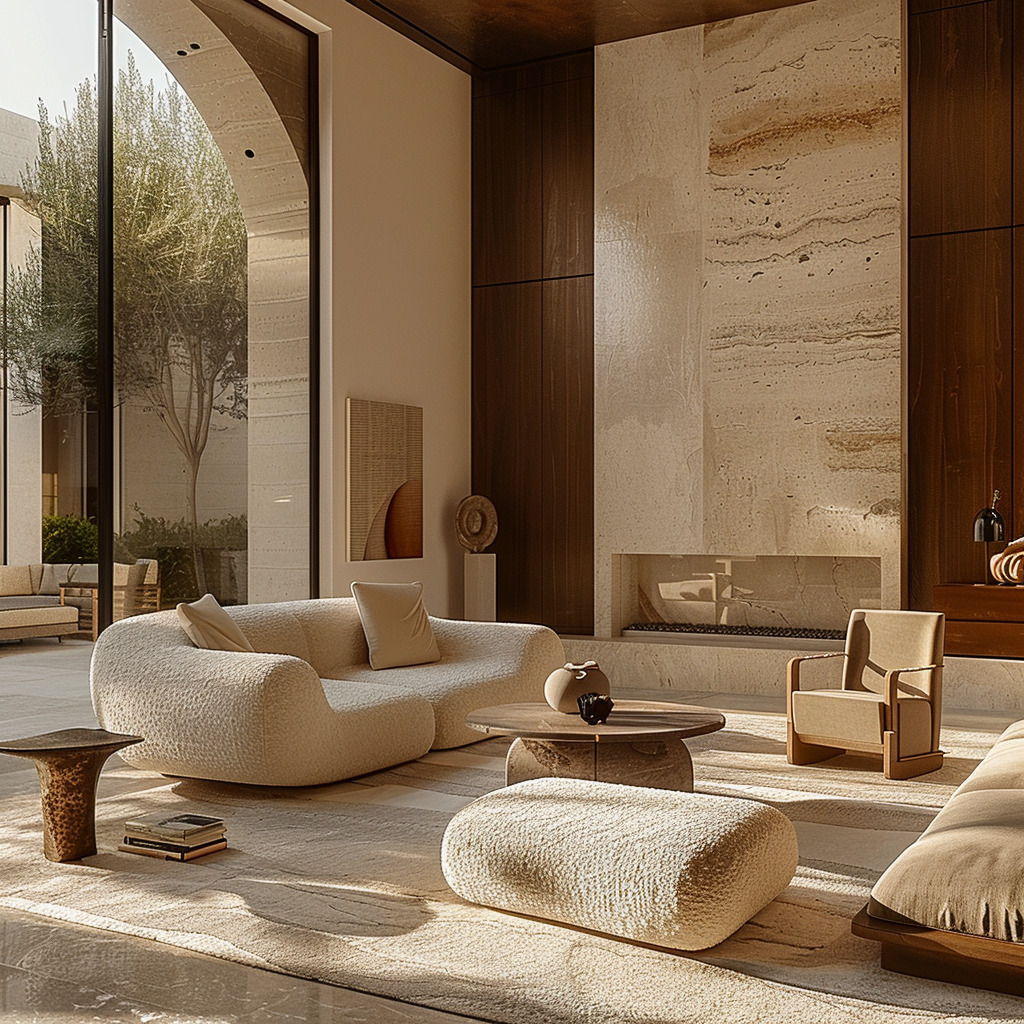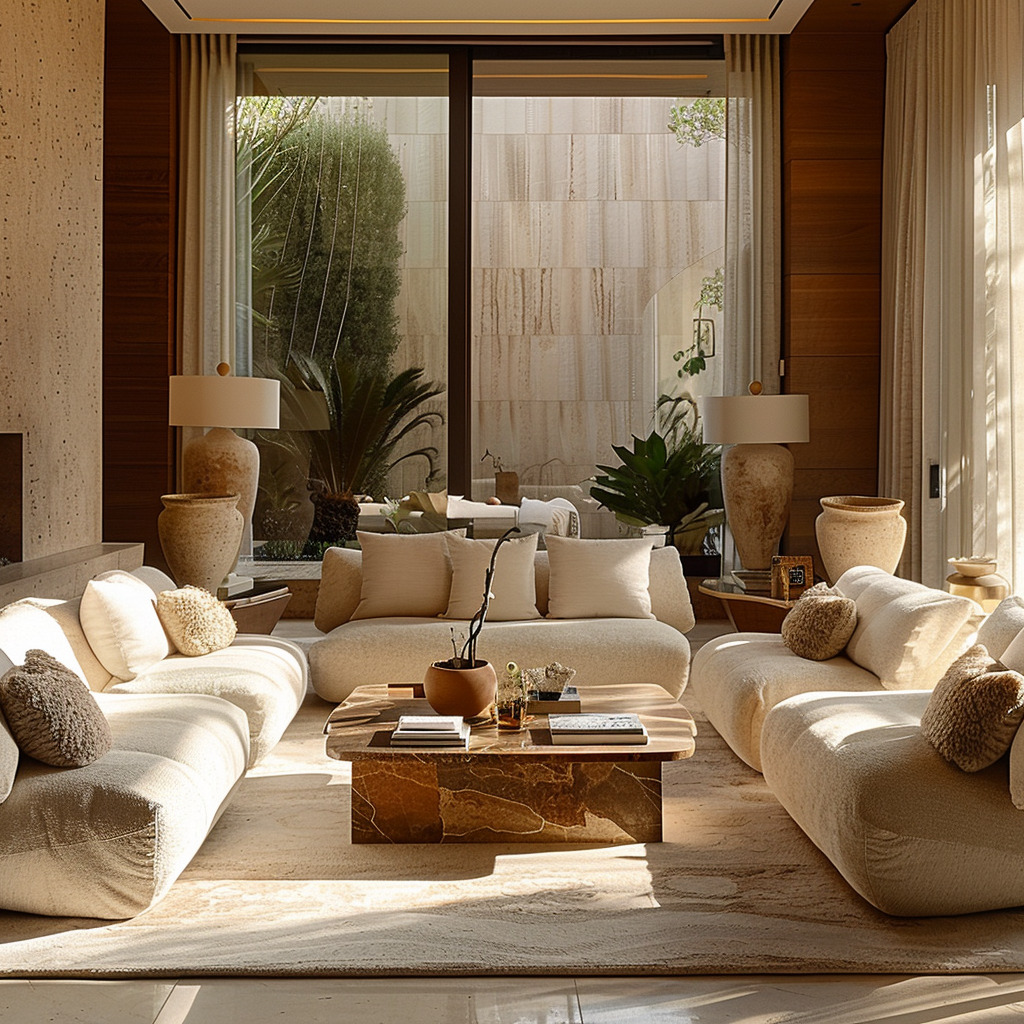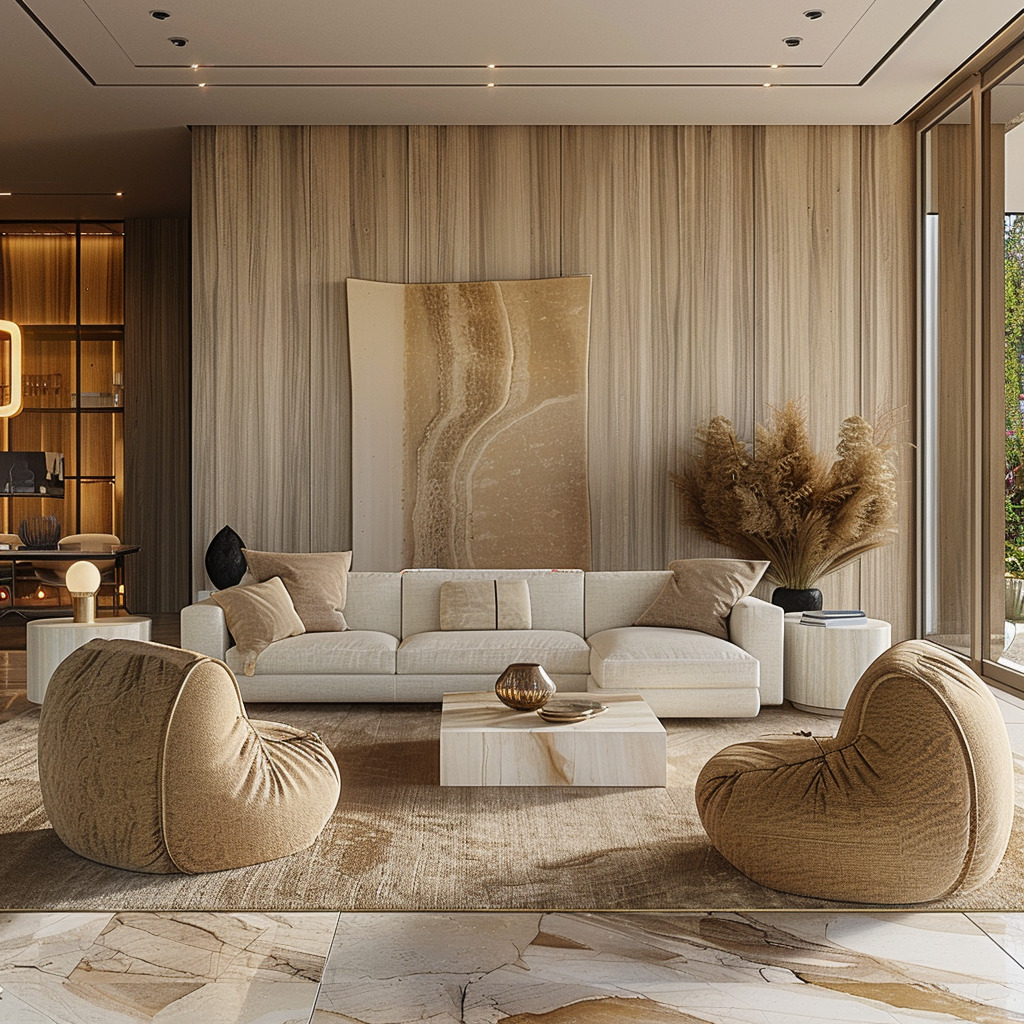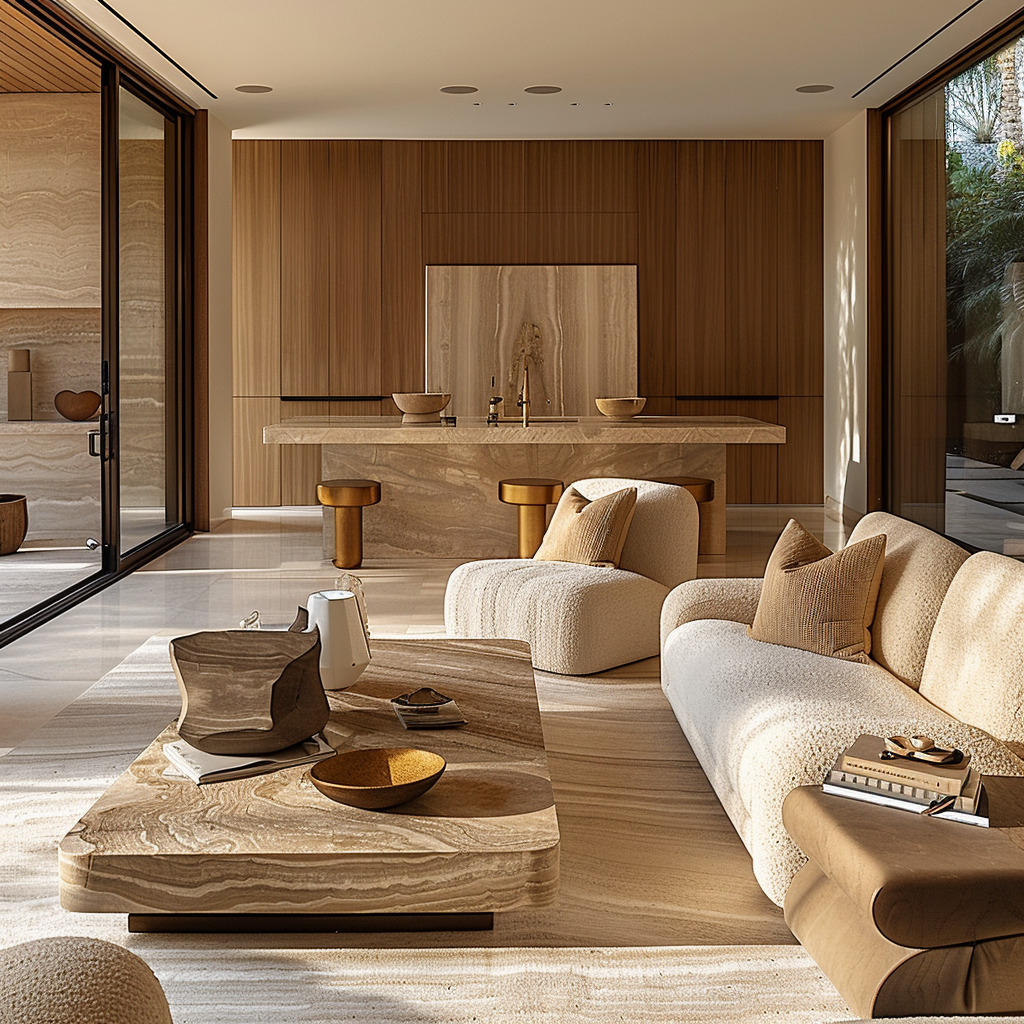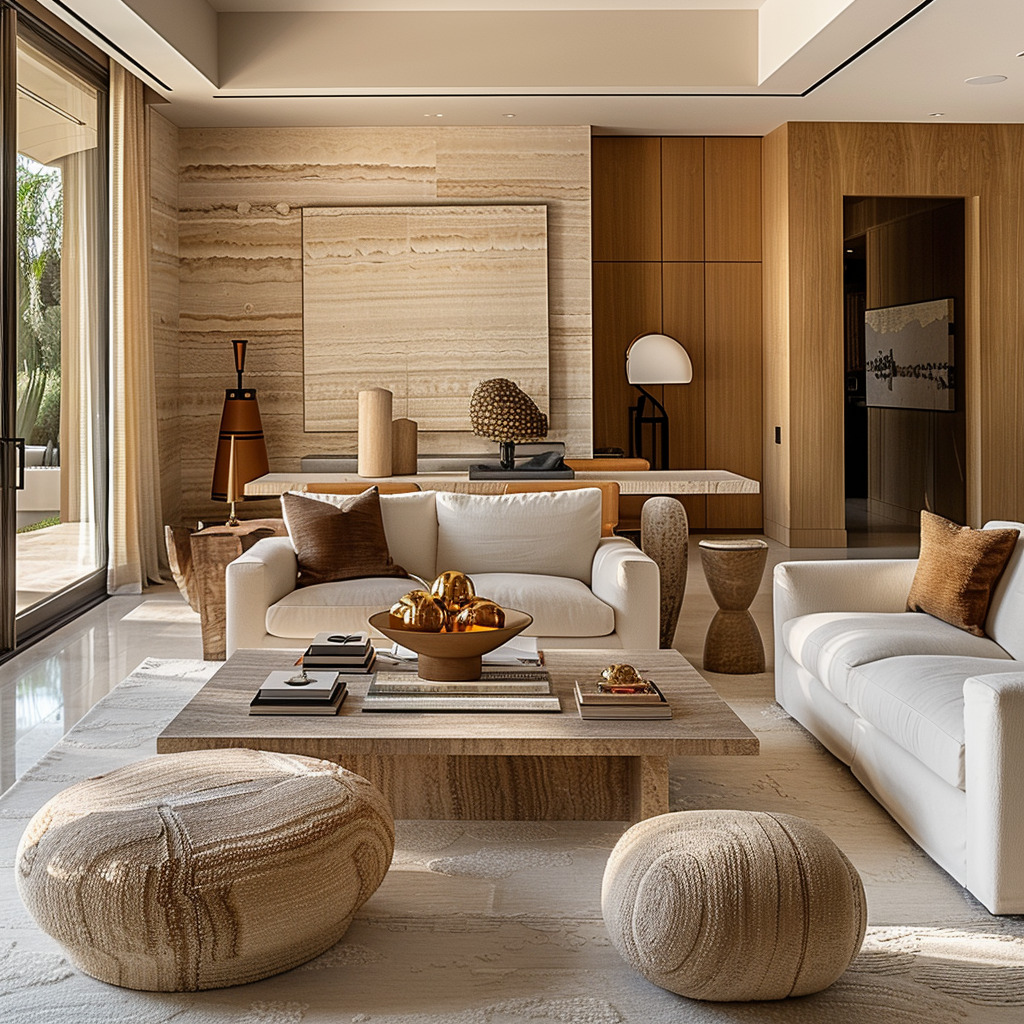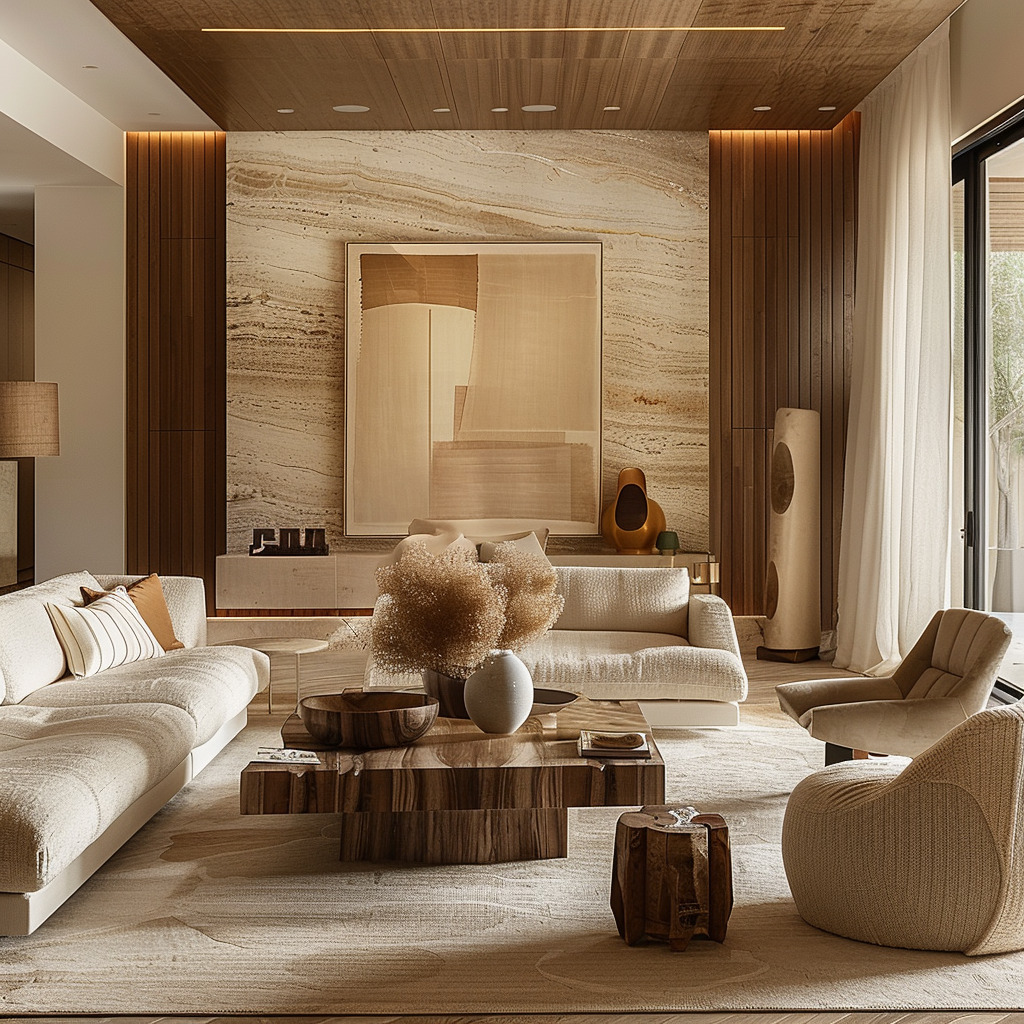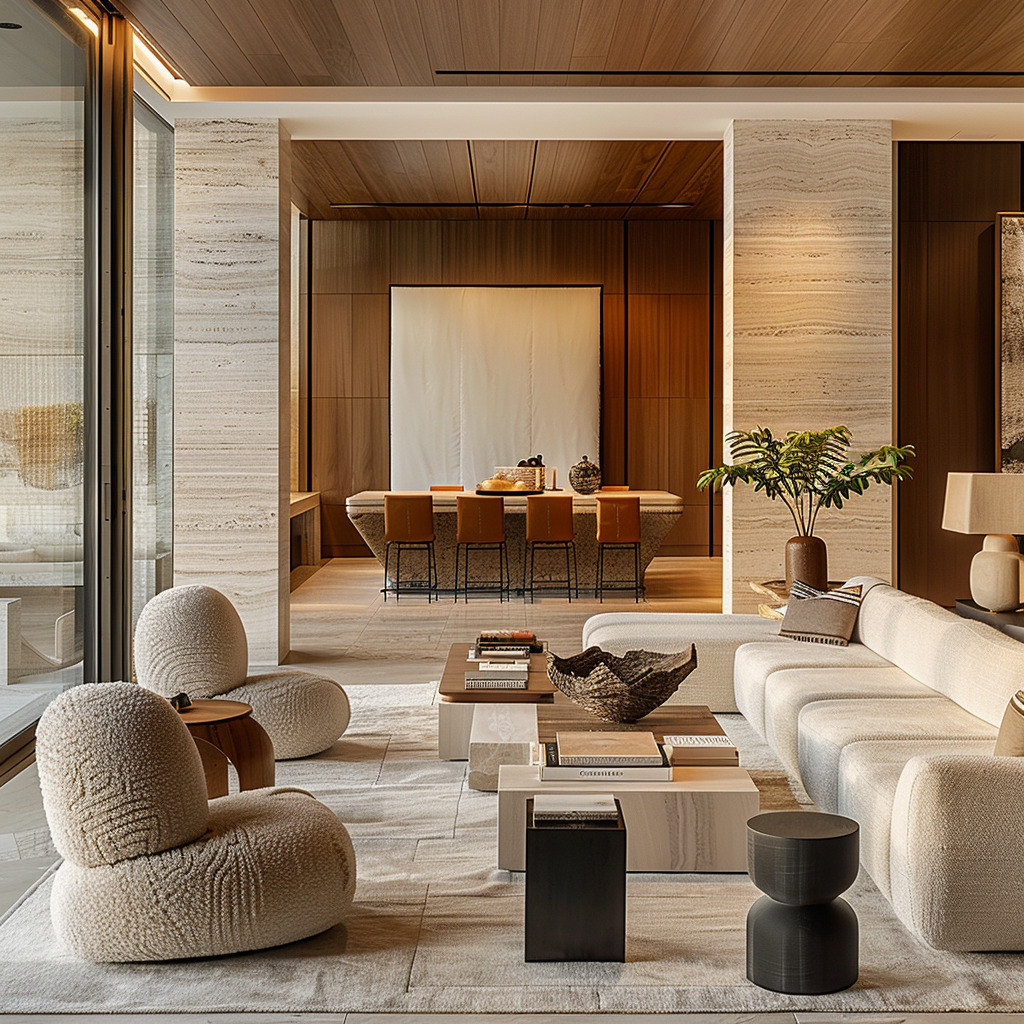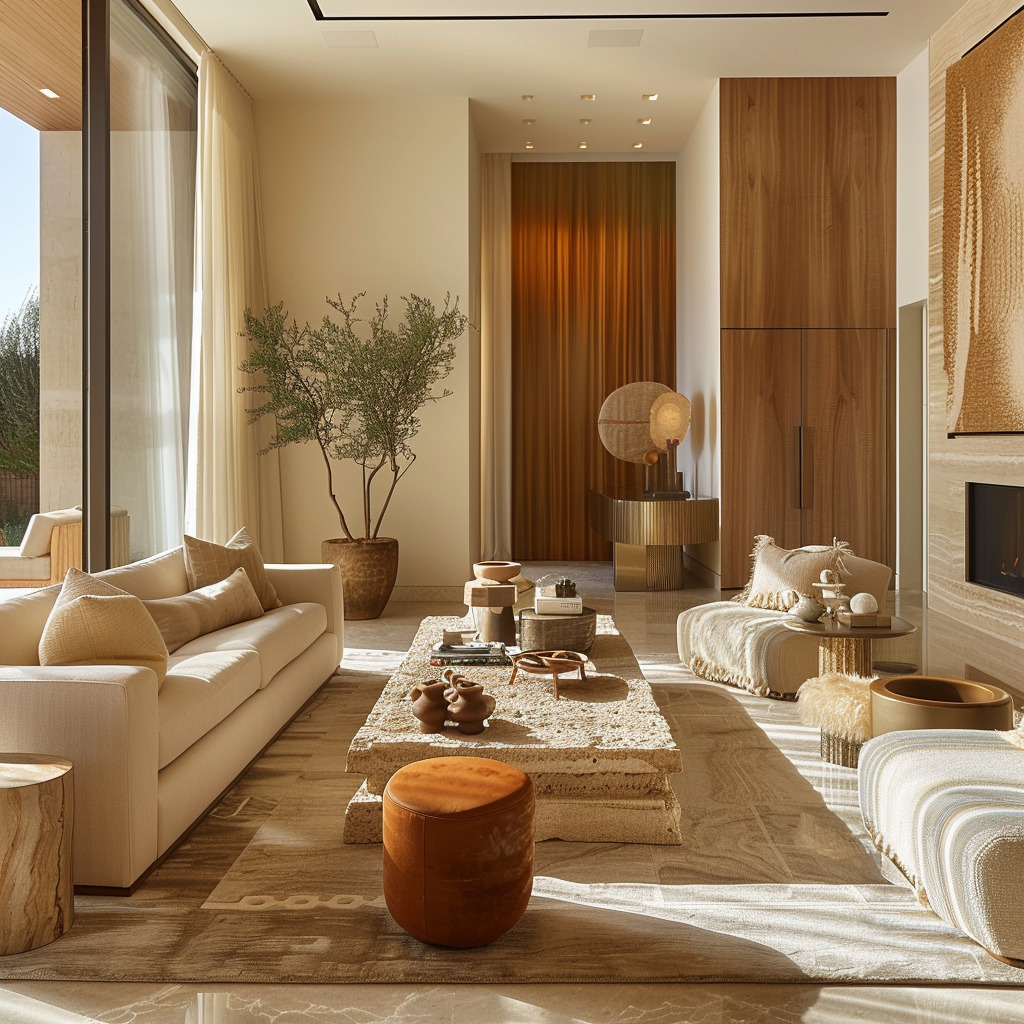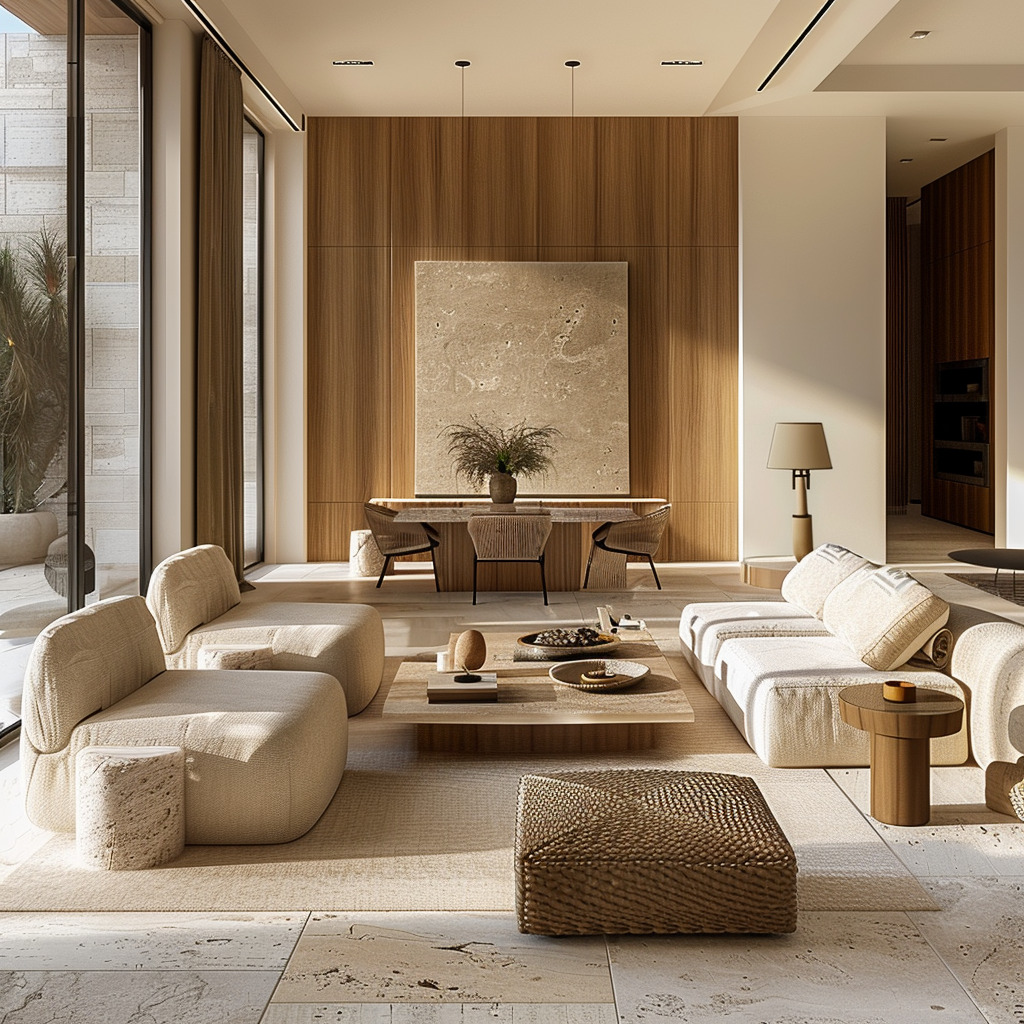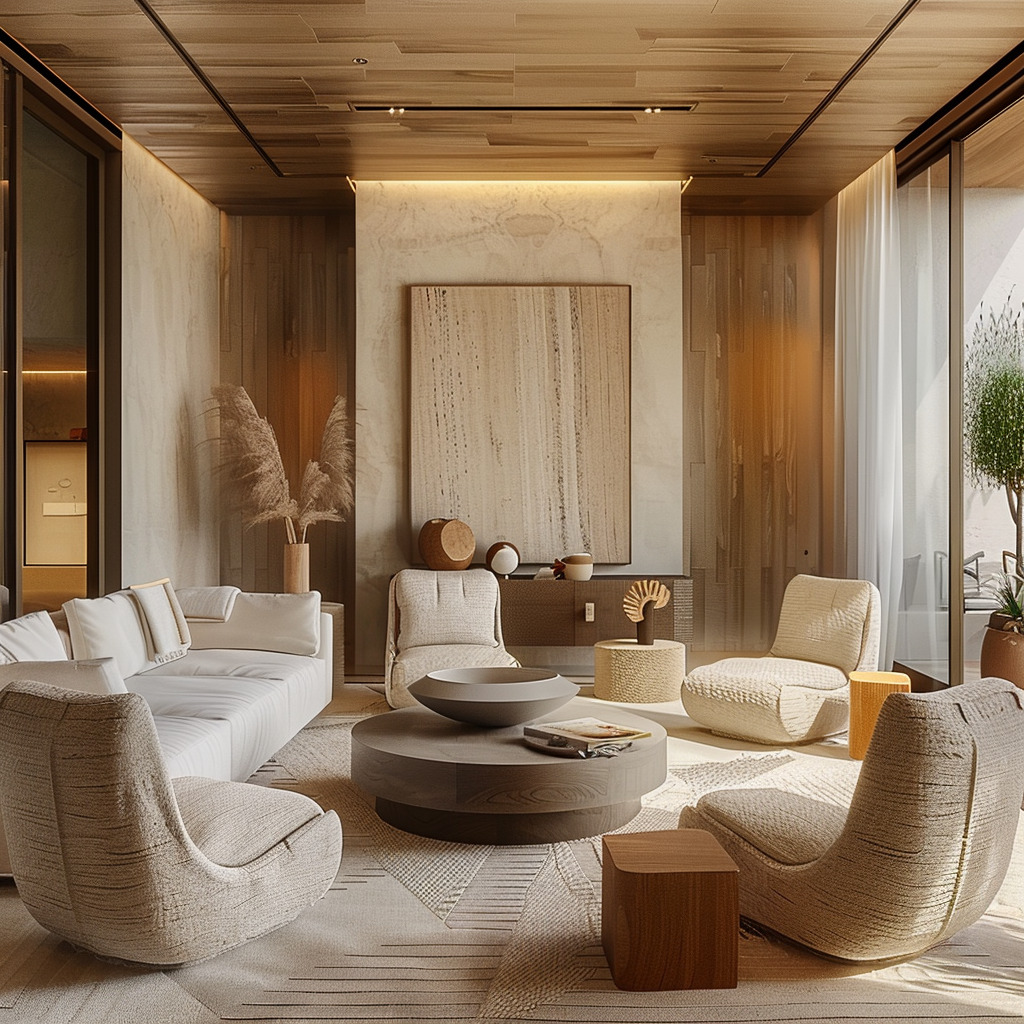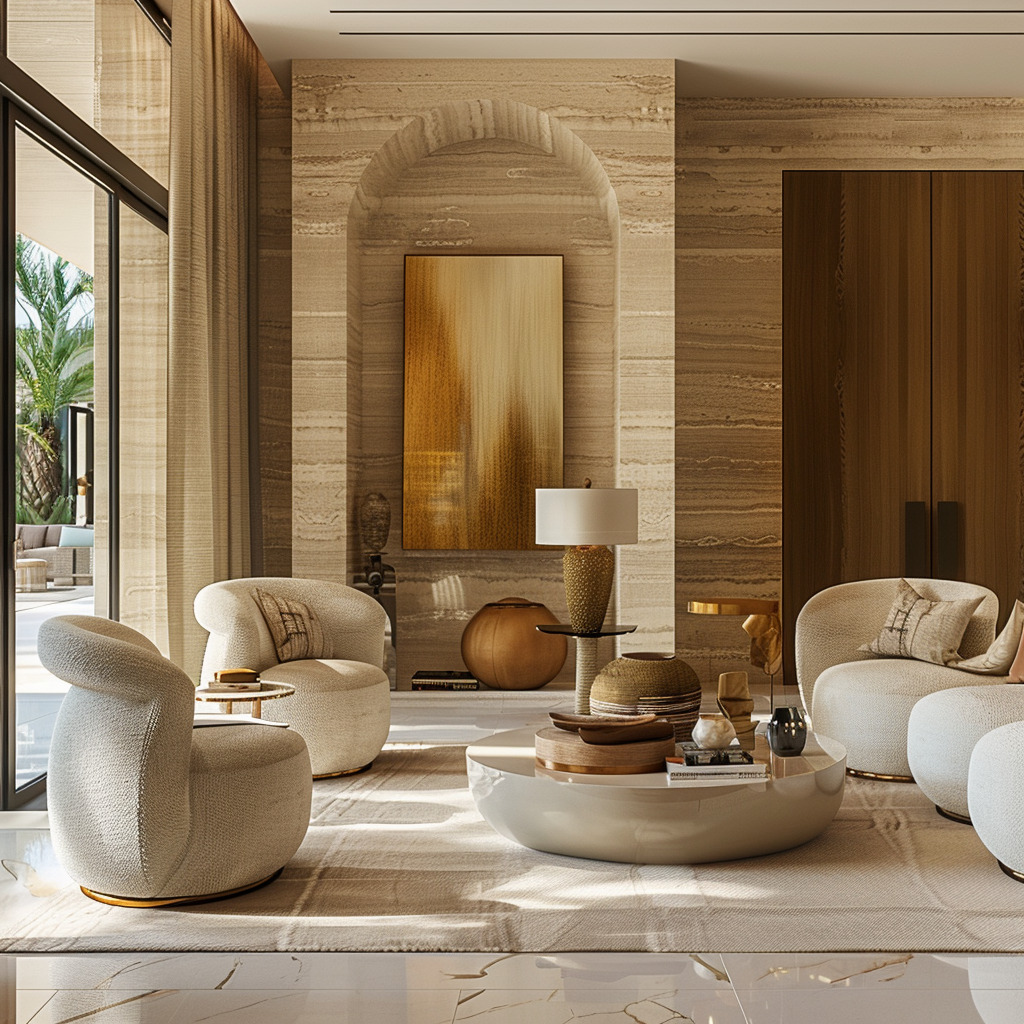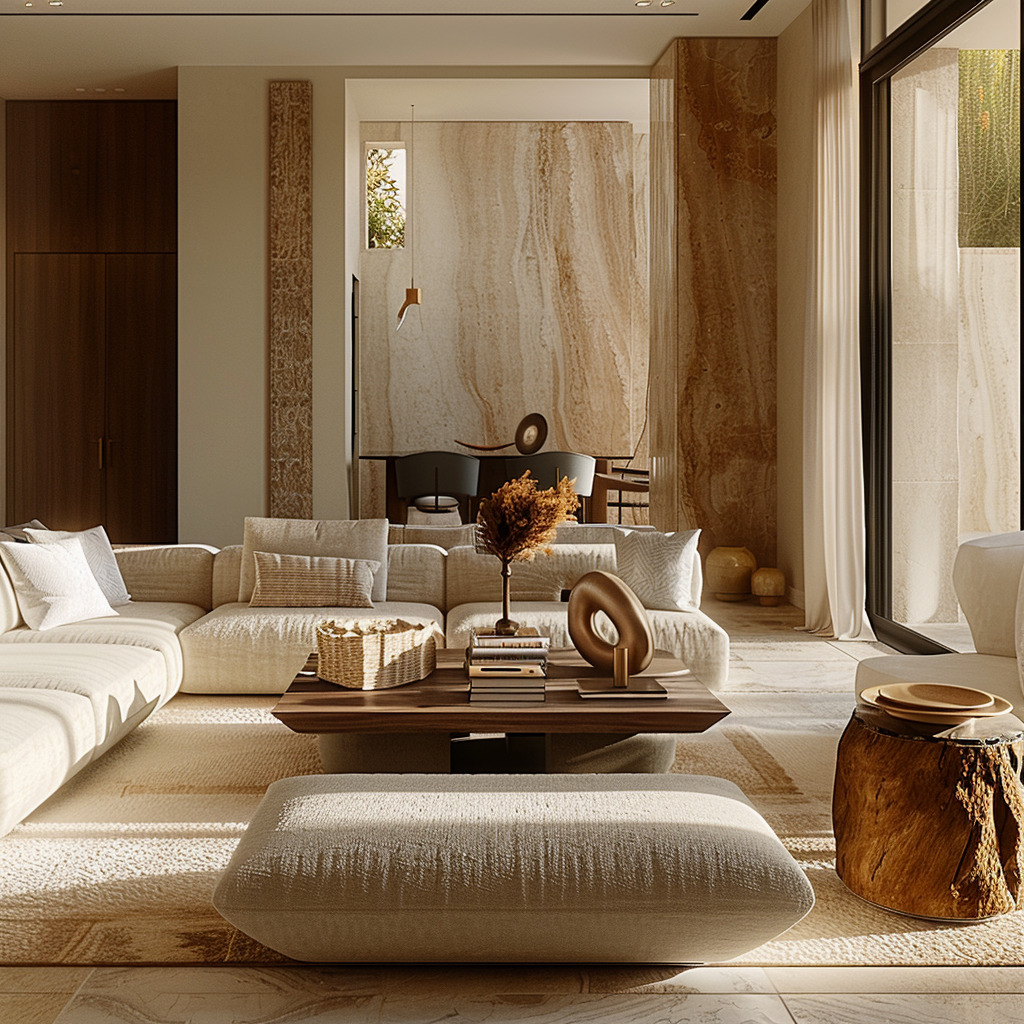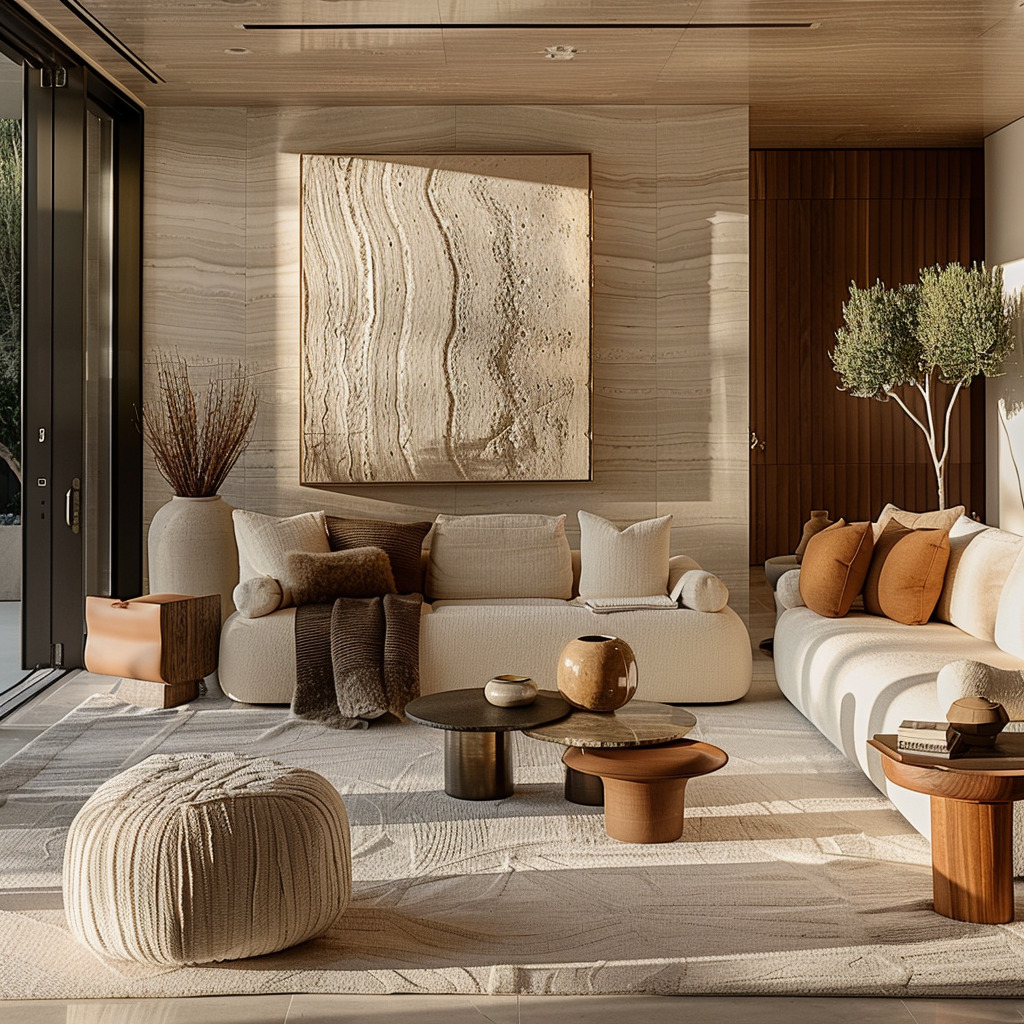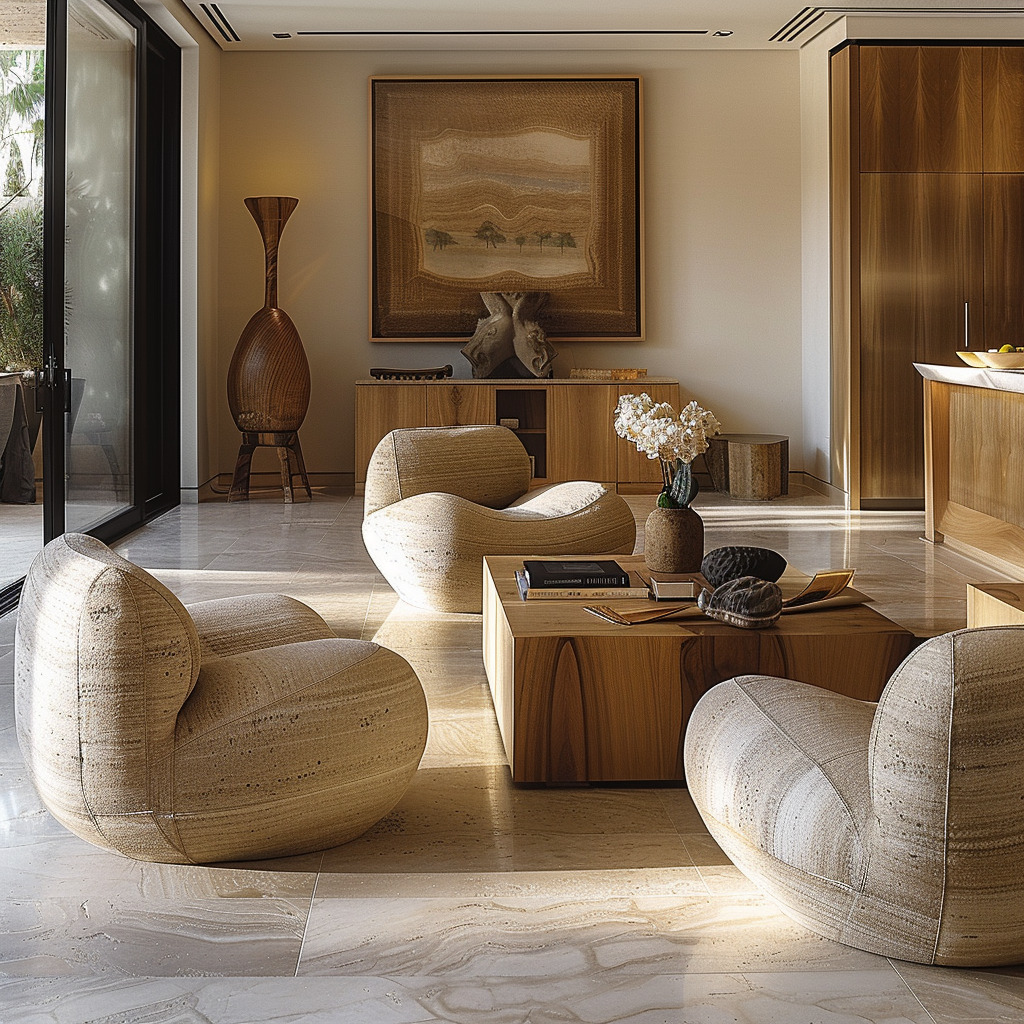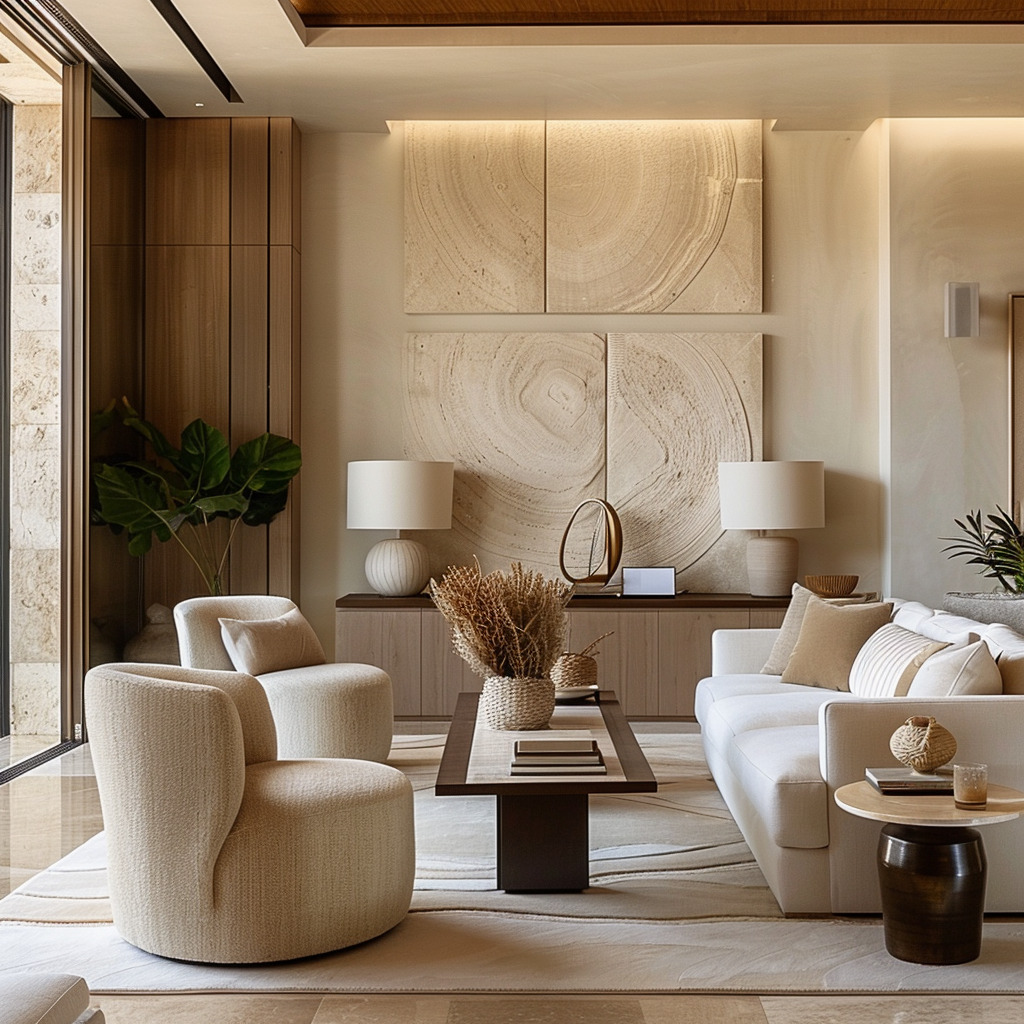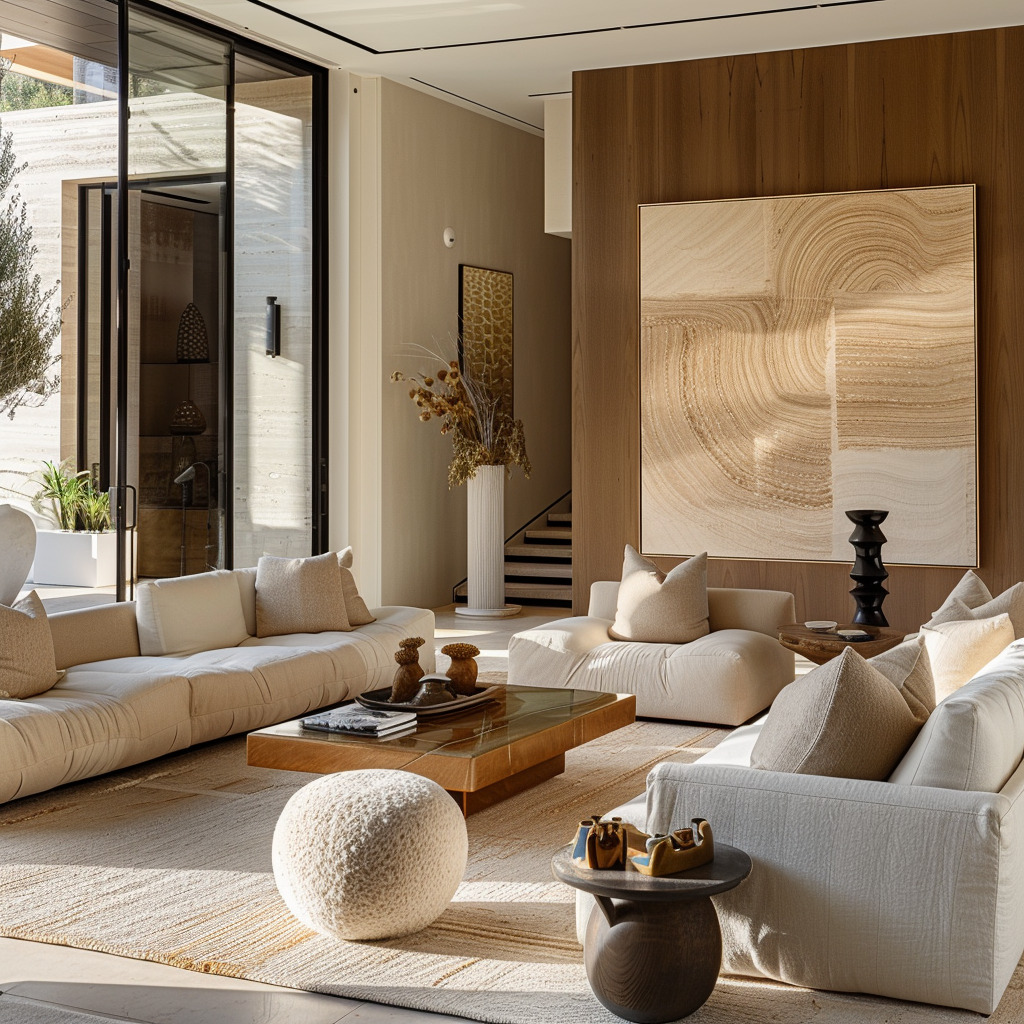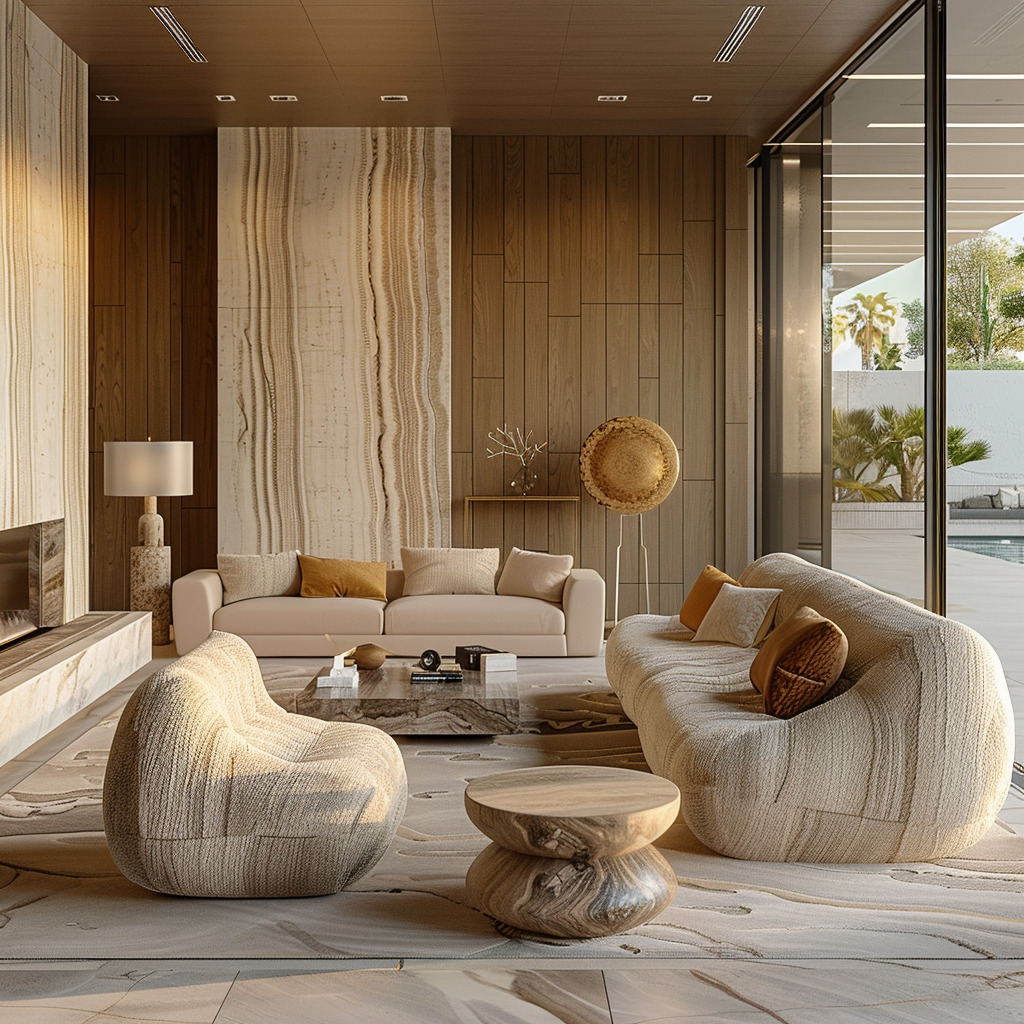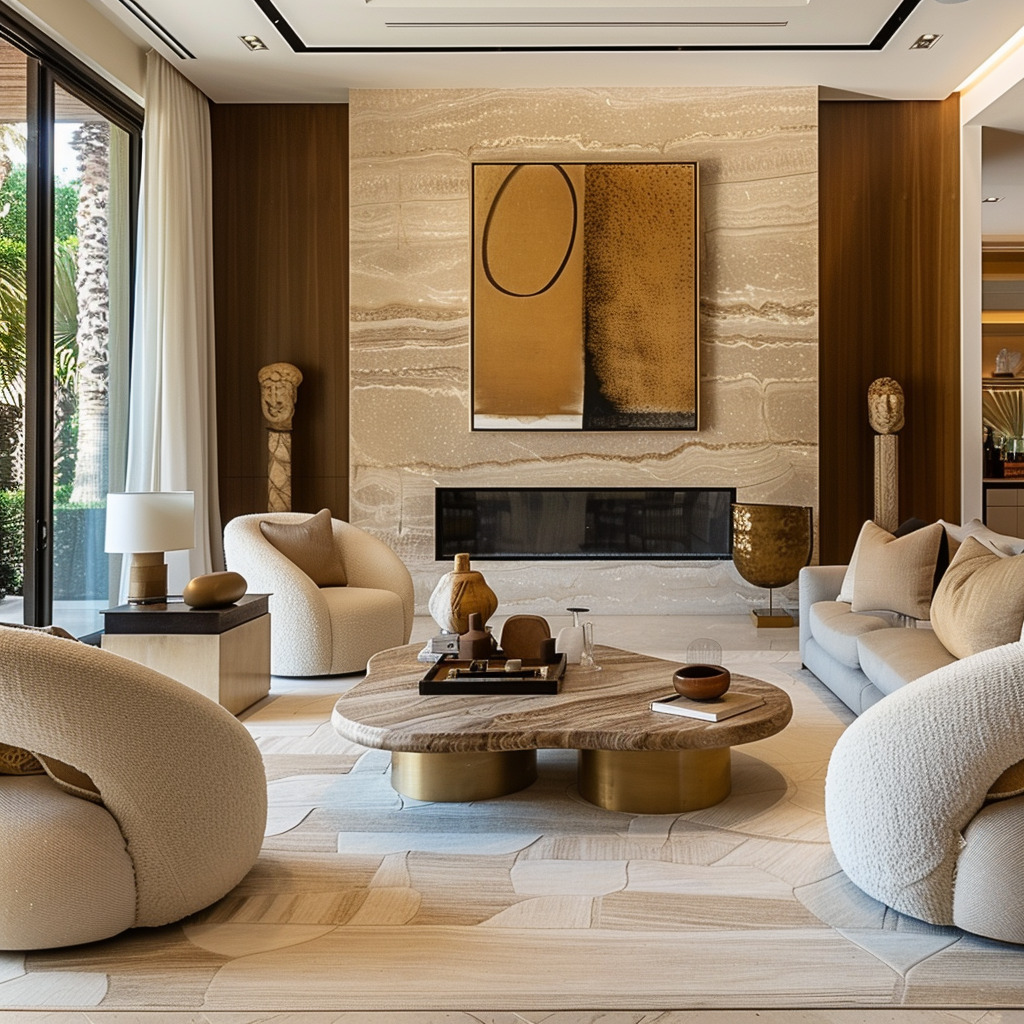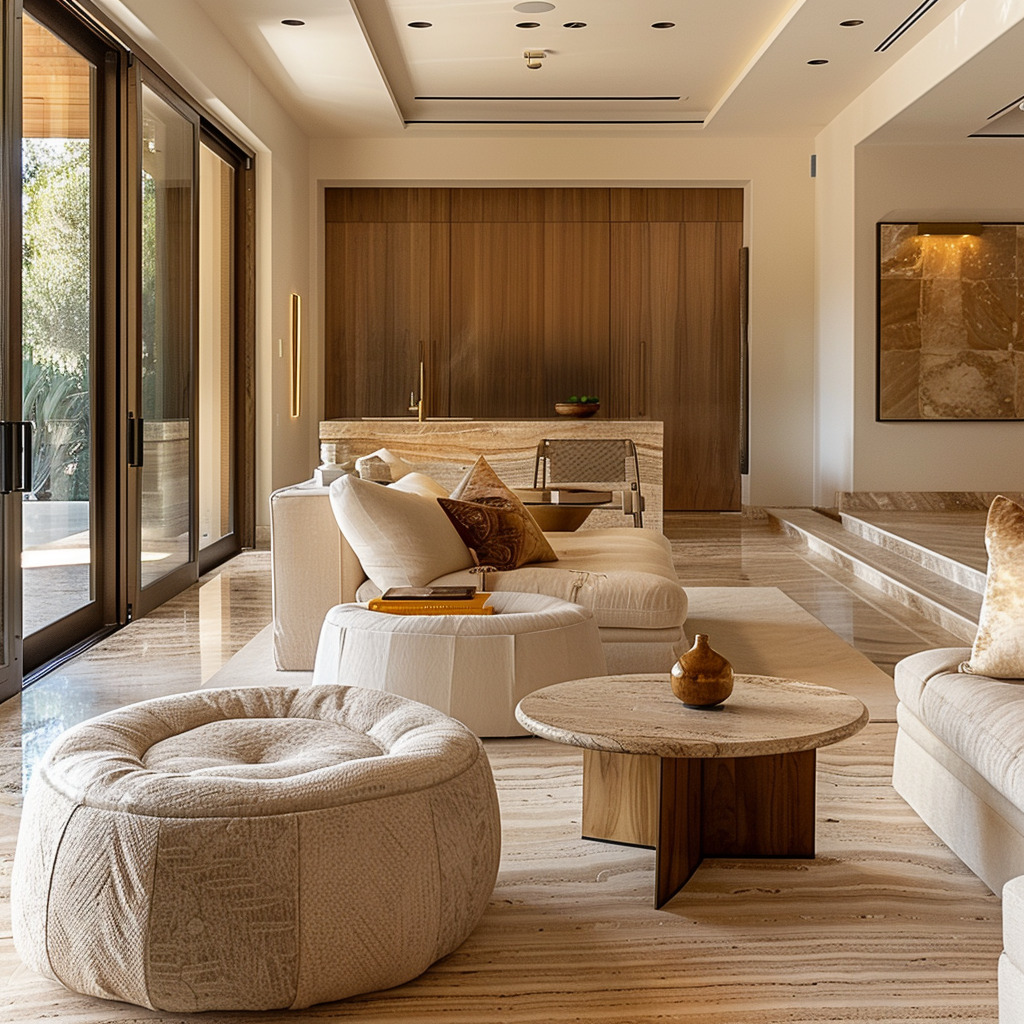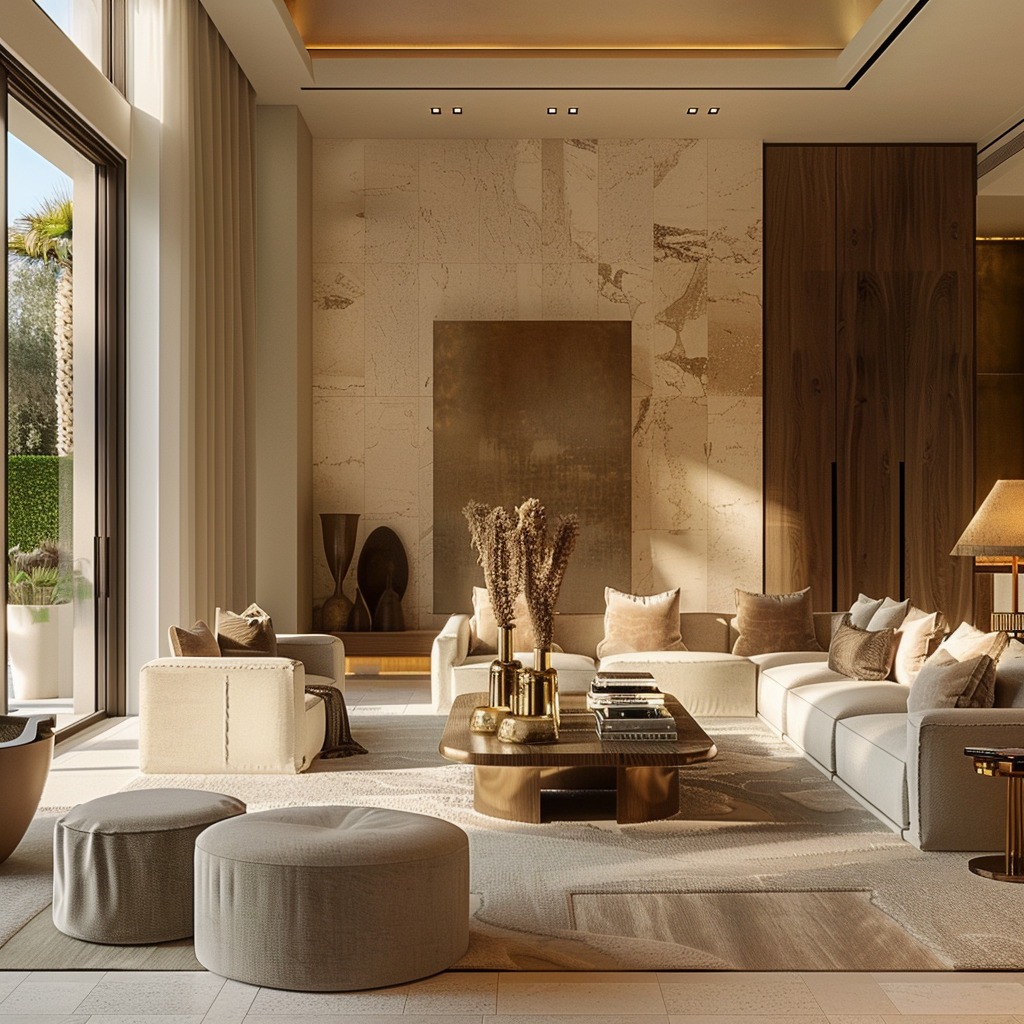In the field of interior design, there exists a sweet spot where the serenity of natural materials, the simplicity of minimalist aesthetics, and the warmth of expert craftsmanship converge to create spaces that are both tranquil and invigorating.
This article delves into the heart of modern, sophisticated interior design, revealing how the harmonious interplay of wood, stone, and textiles can establish an environment that is not just visually stunning but also a bastion of comfort and timeless elegance. We will explore how the strategic use of these elements and thoughtful design choices contribute to the creation of living spaces that not only embody luxury but also echo with the principles of durability, quality, and a cohesive sensory experience.
Join us as we unravel the nuances that transform a house into a luxurious home, where every detail is a testament to the integrity of design and the art of living well.
The interior designs exhibit a masterful execution of modern sophistication, marrying the innate warmth of natural materials with the subtlety of neutral color schemes, all wrapped in a minimalist aesthetic. The interplay of materials like wood, stone, and textiles contributes to an environment that feels both elevated and comfortable, inviting residents and guests alike to feel at home.
Wood surfaces, omnipresent in the design, exude a tactile warmth that is both seen and felt. The choice of wood in these interiors goes beyond its function, becoming an integral part of the design narrative.
In the images, we see a celebration of wood’s versatility: from the pale oak floors that expand the perception of space with their broad planks and gentle grains to the walnut cabinetry that offers a richer, darker counterpoint. These wood elements are not uniform; rather, each carries a different tone and grain, ensuring that the rooms are layered with variety and interest.
The grain patterns are deliberately placed to draw the eye, leading it around the room and creating visual flow. For those looking to replicate such a feature, the key is to choose wood with a visible and interesting grain pattern and to use it consistently for both flooring and furniture to create a cohesive look.
The flooring, particularly, deserves mention. Its light color not only makes the rooms appear more expansive but also acts as a stage for the furniture and decor.
The subtle patterns in the tiles are reminiscent of sandy shores or soft, rippling waves, evoking a serene atmosphere. Such flooring can be integrated into a home by selecting large-format tiles with natural, soft patterning.
The key is to keep the tones muted and natural, allowing the inherent patterns to subtly emerge without overwhelming the space.
In some interior, we notice the flooring transitions smoothly into accent features, such as a raised platform or steps, using the same material for continuity. This seamless transition is a design technique that creates a sense of unity and flow throughout the space, an idea homeowners can adopt to enhance the fluidity of their interiors.
Stone’s incorporation into the design goes beyond mere functionality; it stands as an artful statement within these interiors. The wall cladding serves as a focal backdrop, giving texture and gravitas to the spaces.
This juxtaposition of stone against the smoother surfaces around it allows for a dialogue between rough and refined elements, creating an engaging sensory experience. Stone’s selection is not limited to monotony; the range varies from cooler marbles to warmer, veined options, each type carefully selected to resonate with the room’s color scheme and lighting.
The furniture accent pieces – be it a table base or decorative bowl – are hewn from blocks of stone, ensuring that even the most utilitarian items carry a weight of elegance.
To integrate a similar stone feature in your interior, consider the room’s existing color scheme and lighting. Select a stone that complements these elements, either by contrasting with smooth surfaces or by enhancing the natural light in the room.
Employ stone as statement pieces like a mantle or a tabletop to add depth without overwhelming the space with its solidity.
Textiles bring a much-needed softness to balance the solidity of stone and wood. They introduce not just color but texture, an often-underestimated aspect that can add richness and layers to a space.
The sofas and chairs, upholstered in luxurious fabrics, beckon with their promise of comfort. The tactile experience is further enriched through the varied textures of the throw pillows – some smooth and silken, others nubby and knitted – and the rugs that blend seamlessly with the floor yet delight the feet with their plushness.
The hues of these textiles play with the natural light, with their creams, beiges, and browns, casting a soothing palette that makes the space feel more expansive and serene.
To incorporate textiles effectively, focus on layering various textures to add depth to your interiors. Use a mix of materials in your upholstery, cushions, and rugs to create a tactile landscape.
Stick to a harmonious color scheme that complements the natural materials used throughout your space, and select textiles that offer both comfort and aesthetic appeal.
The furniture selection displays a masterful blend of contemporary design with an organic touch. The clean lines and smooth surfaces of the sofas and chairs suggest a minimalist influence, promoting an uncluttered and open environment.
Yet, the furniture is not stark; it is inviting, offering comfort without sacrificing style. The contrasting sculptural pieces, whether it’s a coffee table with a unique geometric structure or a sleek console with natural wood patterns, become the centerpieces.
These pieces not only function as practical furniture but also as sculptures that enliven the space with their unique forms and creative design.
In choosing furniture for a similar aesthetic, look for pieces that balance form and function. Opt for clean lines and neutral colors in your primary pieces and introduce organic, sculptural elements as accents.
Look for unique design details that can make a statement, such as an unusual shape or a mix of materials, to create focal points in your room.
The lighting in these interiors is as much about function as it is about curation, akin to how one might select pieces for an art collection. Fixtures are chosen with an eye for their sculptural qualities and their interplay with the rest of the interior architecture.
A mix of ambient, task, and accent lighting is employed, with each fixture serving a purpose beyond mere illumination. Recessed lights provide a soft glow that highlights the natural textures of the walls and floors, pendant lights act as visual anchors above key pieces of furniture, and directional lights cast dramatic shadows that give life to the art pieces and plants within the space.
To introduce such thoughtful lighting into your own interior, start by considering the roles of each area within a room. Use a combination of overhead lighting, floor lamps, and table lamps to create layers of light that can be adjusted as needed.
Choose fixtures with materials that complement the dominant textures in your space, and consider dimmable options to alter the mood for different occasions.
In conclusion, the success of these interiors lies in a holistic approach to design, where each selection is intentional and purpose-driven. The attention to the interplay of materials and craftsmanship brings forth an environment that transcends trends.
It’s a crafted landscape of experiences, where every material and texture chosen is meant to be touched, used, and lived with. The focus on natural elements brings an element of the outdoors inside, promoting a sense of calm and connection to the earth.
This layered approach to design is one that can be emulated in any home. By selecting materials not just for their look but for their feel and durability, and by choosing furniture that offers both comfort and aesthetic simplicity, you can create a space that is both functional and beautiful.
Consider the flow of daily life in your space and select elements that will not only withstand the test of time but will also grow more beautiful with age and use. The resulting environment will be one of effortless elegance and enduring style.


